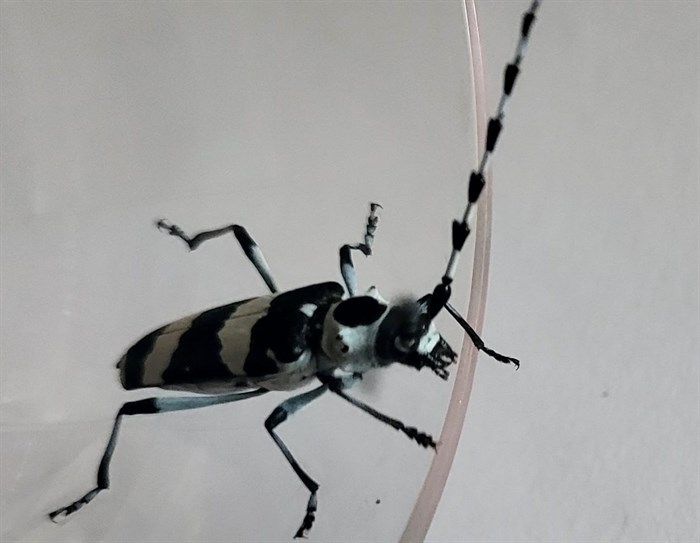
This banded alder borer beetle emerged from a wooden coffee table in Glenmore, Kelowna.
Image Credit: SUBMITTED/ Rod Tribiger
June 10, 2024 - 6:00 AM
As with all insects, beetles can give some people the heebie-jeebies but for others, beetles are fascinating and fun to find and photograph.
A variety of beetles with funky colour patterns, unique traits and impressive defence mechanisms were found this spring in Kamloops and the Okanagan, and the following specimens are just a few captured by photographers in the region.
Common to the Pacific Northwest, banded alder borer beetles have a very distinct look with black and white striped bodies, wings and antennae, and are about an inch and a half long.
READ MORE: Mammoth-sized moths grab attention in Kamloops, Okanagan
Female beetles lay eggs in cracks in the bark of weakened or fallen alder, maple, ash, oak and willow trees. The larva feed and tunnel into the heartwood and can be mistakenly brought into homes through firewood, according to Washing State University.
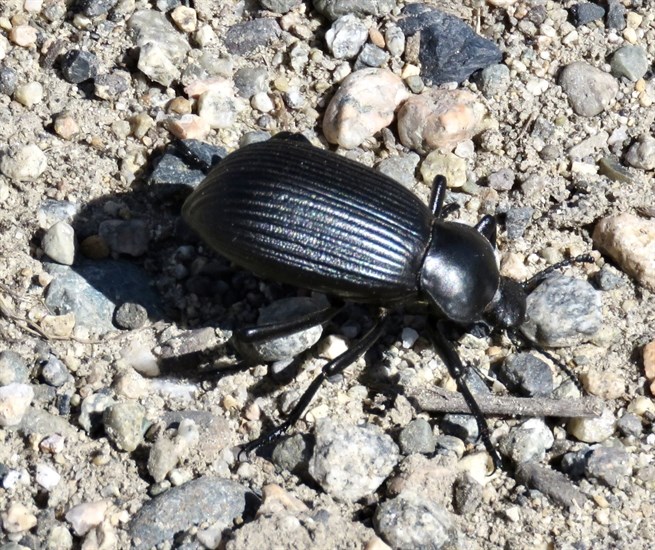
This desert stink beetle was found in Penticton.
Image Credit: SUBMITTED/ Jodi Forster
Native to the deserts of North America, desert stink beetles are not a flashy looking beetle but they have a secret weapon.
The stink beetles can release a smelly secretion from their abdomens to help fend off attackers and according to Beetle Identifications, some large beetles of this genus can spray a distance of 20 inches.
The beetles can be rough or smooth in texture, and because their wings are fused shut, they cannot fly.
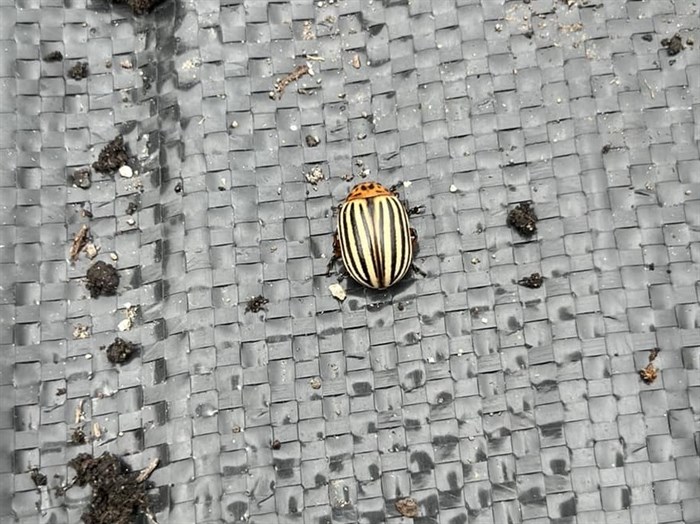
A Colorado potato beetle was spotted on a property in Armstrong.
Image Credit: SUBMITTED/ Jaclyn Cramer
The Colorado potato beetle is a tiny beetle that defoliates potato leaves and damages tomato plants and eggplants.
According to Potatobeetle.org, one beetle larva can eat roughly 40 square centimetres of potato leaves and an adult beetle can eat up 10 square centimetres of leaves every day.
Adult beetles over winter in the soil. They emerge in spring and lay high numbers of eggs on the underside of potato leaves. The larva start munching within 24 hours of birth.
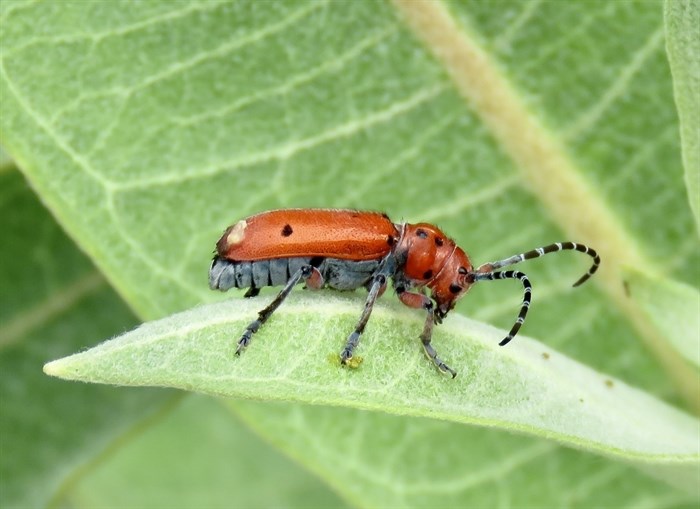
A bright milkweed beetle was spotted in Penticton.
Image Credit: SUBMITTED/ Jodi Forster
Red milkweed beetles are easy to spot because of their bright red colour and black markings.
The beetles eat and pollinate milkweed plants that give them the bright colouring which warns predators to stay away, according to What's That Bug.
The larva also thrive on milkweed plants where they bore into the roots to overwinter.

This American oil beetle was spotted at Kenna Cartwright Park in Kamloops.
Image Credit: SUBMITTED/ Kevin Scherrer
American oil beetles can get up to 1.4 inches long and have a powerful defence mechanism.
A type of blister beetle, these elongated black beetles release a fluid that is toxic to insects and some vertebrates when stressed.
The fluid, that contains a toxin called cantharidin, can cause blistering on human skin.
These beetles can damage bee populations as the larvae attach to male bees and ride to the hives where they eat bee eggs and pollen before pupating into adults.
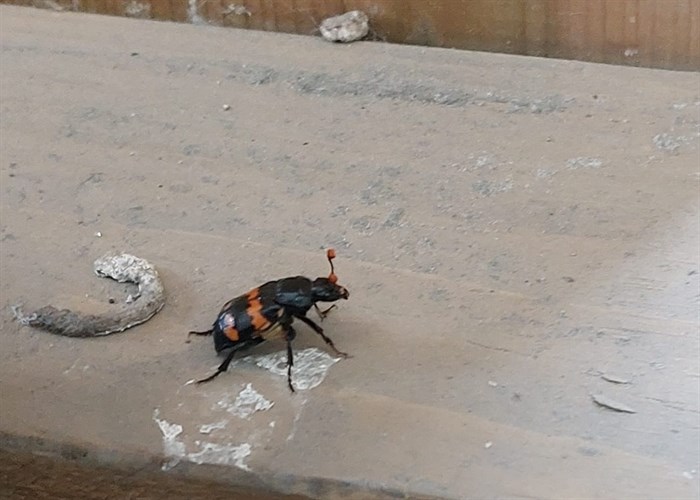
This brightly coloured carrion beetle was found in Kamloops.
Image Credit: SUBMITTED/ Shauna Drysdale
Carrion beetles are black with orange or yellow markings and are known for feeding on dead organic matter, mainly carrion.
The beetles lay eggs inside a carcass and larva emerge a day or two later and feed on the carrion, according to Beetle Identifications.
The beetles help prevent the spread of disease eating and burying carcasses. Several species of carrion beetles have beneficial relationships with other tiny organisms, and can help in forensic research by helping to determine the estimated time of death.
READ MORE: Invasive beetle destroying lawns in Kamloops, Okanagan continues to move east
If you photograph an interesting looking beetle in your neighbourhood, please send your photos to news@infonews.ca.
To contact a reporter for this story, email Shannon Ainslie or call 250-819-6089 or email the editor. You can also submit photos, videos or news tips to the newsroom and be entered to win a monthly prize draw.
We welcome your comments and opinions on our stories but play nice. We won't censor or delete comments unless they contain off-topic statements or links, unnecessary vulgarity, false facts, spam or obviously fake profiles. If you have any concerns about what you see in comments, email the editor in the link above. SUBSCRIBE to our awesome newsletter here.
News from © iNFOnews, 2024